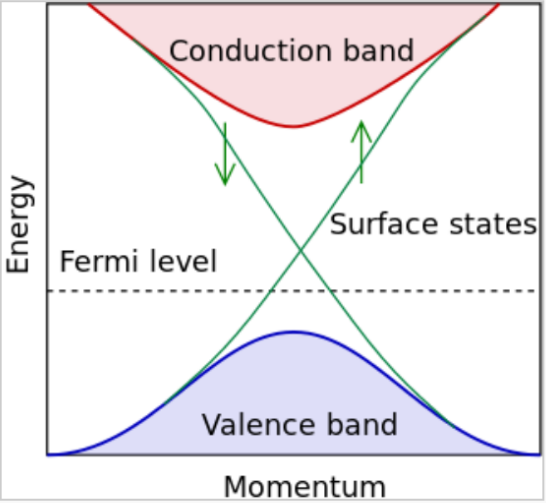Topological insulators are electronic materials that have a bulk band gap like an ordinary insulator but have protected conducting states on their edge or surface. These states are possible due to the combination of spin-orbit interactions and time-reversal symmetry. The two-dimensional (2D) topological insulator is a quantum spin Hall insulator, which is a close cousin of the integer quantum Hall state. A three-dimensional (3D) topological insulator supports novel spin-polarized 2D Dirac fermions on its surface.[1]
On the surface of a topological insulator there are special states that fall within the bulk energy gap and allow surface metallic conduction. These surface state carriers have spins locked at 90° to their momentum. At a given energy the only other available electronic states have different spin, so surface is highly metallic and states cannot be removed by surface passivation. Angular Resolved Photoelectron Spectrosopy (ARPES) showed that Bi2Se3 is topological insulator for 6 quintuple layers and larger PBE says no band inversion -> not top. Insul. G0W0 bulk Bi2Se3 has band inversion but not possible for finite number layers.
reference
[1] Colloquium: Topological insulators, Rev. Mod. Phys. 2010, 82, 3045
[2] Accurate Ab Initio Quantum Mechanics Simulations of Bi2Se3 and Bi2Te3 Topological Insulator Surfaces, J. Phys. Chem. Lett. 2015, 6, 3792


